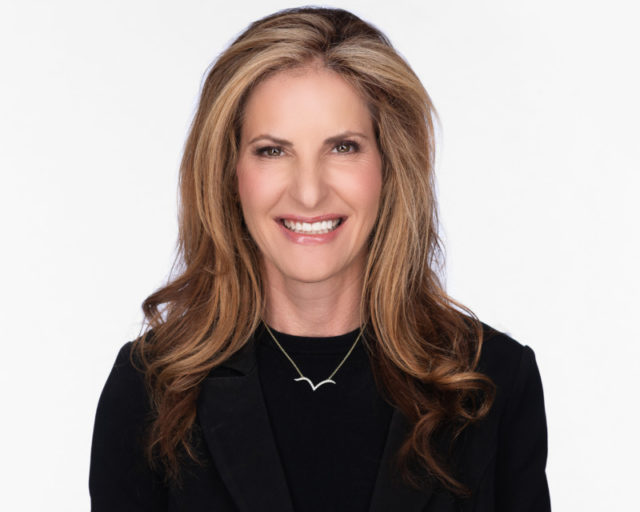The Pink Pandemic: Don’t Covid-Coat the Problem, Lift Women Up

We are only now beginning to understand the devastating impact Covid-19 has had on women in the global workforce. Not only did the pandemic disproportionately affect women, particularly those in marginalized communities, working mothers, and female caregivers, but it worsened the gender gap in the workplace, setting women back by decades. According to The National Women’s Law Center, by early 2021, only 57% of U.S. women were working — the lowest number since 1988. And, the rest of the world fared no better. McKinsey & Company reported that while women account for only 39% of global employment, they suffered 54% of job losses worldwide.
So what is the “pink pandemic?” COVID-19 has affected women in all aspects of their lives, which is why the crisis is both personal and professional. Female-dominated industries like hospitality, retail, and education were hit hard with job losses. And, for those women working on the frontlines of the pandemic, the emotional and mental trauma caused by COVID-19 cannot be underestimated.
While many women work out of the house (or at least did before the onset of COVID), statistically speaking, women are still the primary caregivers in most households. This means that in 2020, the responsibility of online schooling and caring for the health and safety of family members fell onto women’s shoulders more often than men’s. The pandemic has eliminated paid work opportunities for women, but it has added to their unpaid — but necessary — work as well.
The pandemic also exposed deeply rooted inequities and biases that existed long before we started wearing masks. In other words, we can’t just “Covid-Coat” the problem.
Existing biases, as well as pandemic disruption have adversely affected certain groups of women even more. Mothers are more likely than fathers to worry about caregiving responsibilities affecting their performance. Senior-level women are more likely than their male counterparts to feel that they’re “always on.” And Black women are more likely than women and men overall to feel like they can’t bring their whole selves to work.

In fact, all these negative effects are even more pronounced for women of color and immigrants, particularly those who work in jobs that have been threatened or eliminated. These women are also less likely to receive subsidized unemployment benefits. According to the U.S. Bureau of Labor Statistics, the 2020 unemployment rate for Black women was 33% higher than overall working women.
Obviously, there are immediate consequences. Out of work women have less or no income while also losing critical employment benefits such as health insurance. And the ramifications extend far into the future. With women leaving the workforce at these historic rates, there will be far fewer women, and notably women of color, in leadership or on track to be leaders in the years to come. The — albeit slow — progress women have seen over the past decade may be erased. And, the problem may seem too vast and all-encompassing to solve.
Here’s what we can do. Help lift women up, rebound, and regain influence, power, and capital by building on three pillars. Female Empowerment, Effective Allyship, and Organizational Responsibility.
- How can women help themselves regain power and influence? By making meaningful connections; acquiring in-demand competencies — both role-based and power skills; and building strong communities.
- How can allies help? By growing personal awareness; actively advocating for women; and taking action.
- And what should organizations do differently right now? Advance women through empowerment; enable women through upskilling, reskilling, and ongoing leadership development; and stay engaged with present and future female employees.
Let’s start with the first pillar: Female Empowerment. For all women, whether they’re currently in the workforce or not, it’s important to keep skills and mindsets agile, transferable, relevant, and irreplaceable through connection, competency, and community.
Perhaps the most important thing women can do right now is to develop meaningful connections. I think we all recognize the value of a support system, but it’s more vital now than ever before. Yours might include mentors, sponsors, friends, or family members who have helped you along your career journey. While our physical connections have been disrupted, our virtual relationships can help us build and retain strong connections with important people.

When women leave the workforce, the need for maintaining a close network becomes even more important — for exposure, visibility, and sponsorship. I challenge you to seek out mentoring and coaching opportunities — whether you’re getting guidance from someone or helping someone who’s looking to grow.
A surprising benefit of the pandemic is that global workplaces are more connected than ever before. Digital communications mean that networking isn’t limited by borders, or even time zones. This allows us to tap into leaders across industries and countries, creative thinkers, thought leaders, and entrepreneurs, and create for ourselves new social learning opportunities.
During this time, it’s also important for women to retain and develop new competencies. Take the time now to think about how your strengths, skills, and mindset can help you down the road. Stay informed about new advances in technology that are relevant to your career goals. For example, there are a range of digital skills that have become more desirable than before, and even traditional roles have been reframed through a virtual lens.
Women should also use this time to engage in non-work leadership. Volunteering for a nonprofit or within a community is a great way to develop leadership skills and to build relationships with others who are passionate about the things you care about. And those same leadership skills can be transferred to your work environment.
And remember, professional networks are not the only sense of community you should have. It’s also important to build a team for emotional support. Whether a woman has voluntarily or involuntarily made a career transition, the feeling of being back in the talent market after extended time away can be lonely and isolating. Women should look to their friends, family members, and mentors to help them emotionally navigate this time in their lives.
The second pillar is Effective Allyship. As we work together to address the gender-gap exposed by the Covid-19 pandemic, we cannot underestimate the importance of allies. Simply put, allies are those who are in a position of power to advocate for women. To stem the tide of the “Pink Pandemic,” it’s vital that we all engage in “intentional allyship” to enact real change. There are three primary areas of focus: awareness, advocacy, and action.
First, each of us should work on our own personal awareness and seek opportunities to understand any implicit or unconscious biases we may have. For example, assess the diversity of your own network and workplace team, and your organization’s hiring, promotion, or succession plans. And allow space and time to engage and reflect by “seeking to understand.”
From awareness, move on to advocacy. This means avoiding bystander syndrome with intentional enablement. Experienced allies have the ability to sponsor women and speak up against misconceptions and negative microbehaviors. This is especially helpful to women who have taken a career break. Use your voice to influence others. Acknowledge a woman’s great ideas in a meeting or offer to serve as a reference to a woman in line for a promotion. Or, champion a woman’s success on social media.

Last — but certainly not least — is action. Allies must not only “talk the talk,” but also “walk the walk.” To promote genuine change as an ally, you must be active, not passive. There are so many ways you can take action. Host a women’s gathering, volunteer at or donate to organizations that support women and girls. For those fortunate to be in a leadership position and have a seat at the table, use your voice to advocate on behalf of other women who cannot.
Although Covid-19 has widened the gender-gap, gender disparity is nothing new — especially in the C-suite and other levels of power. The impact on women has been magnified by the pandemic, limiting their opportunities, and turning back the clock on progress. That’s why the third pillar, Organizational Responsibility, is so important. Organizations hold a crucial responsibility in enabling women’s career development and driving sustainable change.
But why should organizations care? Because having women in leadership positions is simply good business. McKinsey research shows that company profits and share performance can be nearly 50 percent higher when women are well-represented at the top.
We know from research that senior-level women are more likely than their male counterparts to embrace employee-friendly policies and programs that create and nurture corporate culture. They’re also more likely to take a stand for gender and racial equity, and mentor and sponsor other women and women of color. It’s also been proven that women excel at the power skills of resilience, agility, and empathy — the very hallmarks of modern leadership. So, that begets the question, how do we build a strong pipeline of female talent? At all levels of leadership?
Organizational leaders should focus on three key areas: empowerment, enablement, and engagement.
Empowerment ensures the advancement of women in the workforce. As a leader, you must apply active listening and conscious empowerment to ensure power structures are enabling diversity and not diminishing it. This involves looking within the company to examine who has access to growth, promotions, and leadership development — and more importantly, who does not.
Which leads to enablement. We need organizations to invest heavily in upskilling, reskilling, and developing women in the workplace. This is a proactive endeavor. We must actively seek out ways to recruit — and reboard — women to enable and prepare them for future success.
Finally, organizations need to remain engaged with their present and future female employees. They must review employee benefits and strengthen the resources important to women, like healthcare, wellness, maternity leaves, flexible schedules, and support for childcare and eldercare. HR and Learning can serve as an important epicenter for activities designed to raise women up. Finally, deploying strengths-based recognition programs can foster healthy competition and steady growth.
In a more perfect world, women would have equal opportunities — before, during, and after global disruptive events. The pandemic has set us back years if not decades. It’s absolutely critical that each of us, as women or as allies or as leaders of organizations, do what we can to reverse its effects.
But if that’s not a compelling enough case for any number crunchers out there, here’s one that may be more so. The bottom line is, actually, the bottom line. Investing in strategic talent enablement for women results in a significant ROI and an investment that pays dividends to us all.
Organizations — and entire nations — are measurably stronger, more healthy, secure, and successful when women have equal opportunity and equal reward.
This guest post was authored by Michelle Boockoff-Bajdek

Michelle has more than 25 years of marketing, branding and strategy experience at major tech companies including IBM Watson, where she was Chief Marketing Officer. Michelle knows first-hand the challenges of navigating a male-dominated industry. Because of this is dedicated to supporting women’s careers, particularly in STEM. She has published various content about COVID-19’s effect on women and served as the keynote speaker at the eWOW (empowered Women of the World) 2021 Summit this past April. She is currently the CMO for Skillsoft.

